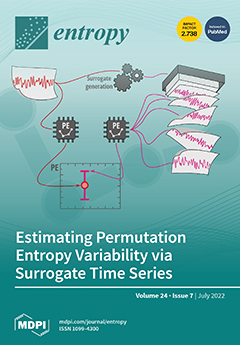In this work, we address the question of the role of the influence of group size on the emergence of various collective social phenomena, such as consensus, polarization and social hysteresis. To answer this question, we study the three-state noisy
q-voter model
[...] Read more.
In this work, we address the question of the role of the influence of group size on the emergence of various collective social phenomena, such as consensus, polarization and social hysteresis. To answer this question, we study the three-state noisy
q-voter model with bounded confidence, in which agents can be in one of three states: two extremes (leftist and rightist) and centrist. We study the model on a complete graph within the mean-field approach and show that, depending on the size
q of the influence group, saddle-node bifurcation cascades of different length appear and different collective phenomena are possible. In particular, for all values of
, social hysteresis is observed. Furthermore, for small values of
, disagreement, polarization and domination of centrists (a consensus understood as the general agreement, not unanimity) can be achieved but not the domination of extremists. The latter is possible only for larger groups of influence. Finally, by comparing our model to others, we discuss how a small change in the rules at the microscopic level can dramatically change the macroscopic behavior of the model.
Full article






